Do you love Wall-E? Well, if you’re a space enthusiast, you’re bound to love the robotic yet beautiful relationship between Wall-E and Eve in space! As a matter of fact, the best space movies, such as Gravity, Interstellar, or The Martian are mostly inspired by the inevitable and unfathomable human desire to travel to space to know the unknown, and to witness the unseen!
This inner drive pushed the Americans and Soviets to compete against each other to reach the moon. In the past, NASA only sent astronauts to space for governmental purposes by staying in space stations to work on space programs. But, the space scenario took a major leap when space tourism became accessible to the public through years of hard work and investment from private investors.
Like, if multi-millionaires can spend millions of dollars on luxury tours on Earth, why not space? For instance, while engineers at SpaceX and Blue Origin are building the future of rocket technology, space tourism has found a new edge with the first-ever space balloon, the Neptune, a pressurized capsule that can accommodate eight people in space!
Also, SpaceX has been at the forefront of everything extra-planetary. Per Reuters, NASA stated that SpaceX’s Starship will land humans on the moon around 2025. For added reference, the mighty Elon Musk, the founder of SpaceX, said he would colonize Mars with humans. Regarding that, DW News stated Elon Musk wants to make humans a multi-planetary species. Colonization of Mars has been the primary goal of the entrepreneur’s multi-billion dollar company SpaceX.

Furthermore, the three leading commercial space companies, Richard Branson’s Virgin Galactic, Jeff Bezos’s Blue Origin, and Elon Musk’s SpaceX, have stepped up the game in the space industry to turn dreams into reality. For example, Colby from “Dude Perfect” went to space in 2022,He was sponsored by MoonDAO to take up this once-in-a-lifetime opportunity. Who knows? You might be next! So now, to satisfy your curiosity further, let’s dig deeper and find out how space tourism might look like with relevant information and exciting facts!
Overview
You may be wondering what exactly space tourism is. Space tourism involves space travel for the recreational purposes of humans. You can divide space tourism into categories like orbital, suborbital, and lunar space tourism. According to the Space Tourism Guide, space tourism is a commercial activity related to space that includes going to space as a tourist, watching a rocket launch, going stargazing, or traveling to a space-focused destination.
Now, another question comes into play. How expensive can space tourism get? It’s no surprise space tourism is suitable for multimillionaires, given how drastically costly it is. By the way, who was the first space tourist? It was an American multimillionaire named Dennis Tito. In the year 2001, he spent nearly eight days onboard the International Space Station. This trip cost him $20 million and made Tito the first private citizen to purchase a space ticket. Over the next eight years, six more private citizens followed Tito to the International Space Station to become space tourists.
With time and technological advancements, space tourism has been commercialized for the public. However, since it’s a niche segment of the aviation industry, a minimal number of consumers can avail themselves to purchase a space experience. As negative as it may sound, not everyone can afford to travel to space, even if it becomes somewhat affordable.

Space Companies
Fascination and acknowledgment regarding space are never-ending, even if it’s going to cost a fortune to take a tour of space. So now, let’s give you the details of three of the most renowned space companies in the world!
Virgin Galactic
Virgin Galactic is one of the most prominent space companies. It was founded in 2004 by Richard Branson. On July 11th, 2021, Branson flew up to space with a crew of 2 pilots and three other passengers and became the first space tourist in over ten years. It was a 90-minute suborbital flight at an altitude of 85 kilometers.
Although Virgin Galactic’s website says that its focus is to open space to everybody, the dream will most likely remain a dream for non-multimillionaires. Why? Because it costs KM for a 2-hour suborbital flight at an altitude of 80 kilometers!
Blue Origin
Want to know which suborbital flight reached a higher altitude than Virgin Galactic? It was Blue Origin, a space company that focuses on commercial space travel. Blue Origin was founded by Amazon CEO Jeff Bezos, and he reached an unprecedented milestone. He was onboard the commercial suborbital flight. Blue Origin’s New Shepherd Rocket took Bezos and three other passengers to space on July 20th, 2021, just nine days after the Virgin Galactic flight!
Although the whole trip lasted only 11 minutes, this suborbital flight reached an altitude of 107 kilometers, surpassing Branson’s flight. And what about the cost? It costs approximately $300,000 for a 12-minute suborbital flight at an altitude of 100 kilometers.
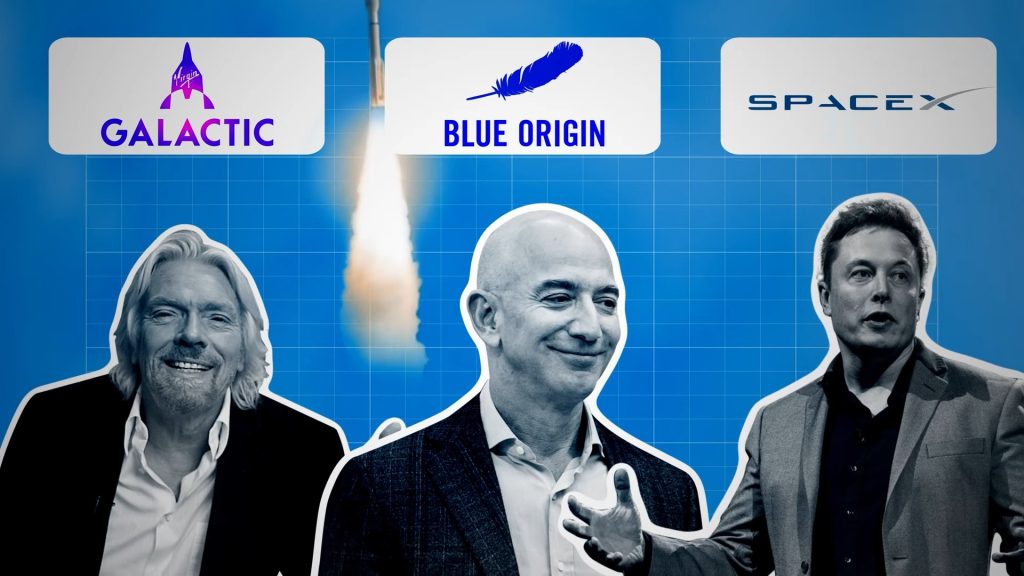
SpaceX
Now, let’s move on to the “Tesla” of space tourism! SpaceX elaborated as Space Exploration Technologies Corporation, was created by the mighty Elon Musk, founder of Tesla, and yes, the man who plans on moving to Mars!
SpaceX launched its first commercial orbital crew spaceflight in May 2020, successfully transporting NASA astronauts to the International Space Station. In 2021, it was reported that Elon Musk had sent four private passengers into orbit for a three-day flight, marking the company’s first mission to space with an all-civilian crew.
In 2022, NASA is using the Boeing Starliner spacecraft and SpaceX Crew Dragon spacecraft for its tourism missions. The official site for Elon Musk’s SpaceX shows the practicality of the capsule, with a row of seats, control displays, and storage space.
And how much does it cost? In April 2022, the Axiom Mission 1 launched with the first paying visitors to the ISS aboard the SpaceX Dragon Resilience for at least $55 million per person.
Market Size
Now, let’s take a look at the global market size of space tourism. It was valued at USD 598 million in 2021, gaining a market share of 56.7 percent. In 2021 alone, there were thirteen commercial spaceflight missions undertaken, with Virgin Galactic, Blue Origin, SpaceX, and NASA having undertaken the majority of spaceflight missions to transport non-astronaut individuals across space and bring them back to Earth after a certain period.

There’s no doubt space transportation is incredibly pricey. For a suborbital trip on Virgin Galactic’s SpaceShipTwo and Blue Origin’s New Shepard, seats usually cost from $250,000 to $500,000. The higher the altitude, the pricier the flights get. In fact, it can be as expensive as more than $50 million per seat.
That means only multi-millionaires and billionaires can afford such trips. According to Orbital Today, paying 200 thousand dollars for 3 minutes in weightlessness or 20 million for eight days in space is not everyone’s cup of tea. Just a century ago, flying on planes was shockingly expensive. But, in 2022, the scenario has changed. Nonetheless, there’s a bright side to it. It will positively impact many socioeconomic processes on Earth, such as job creation, the development of new energy infrastructure based on solar energy, and so on. Also, it will increase opportunity and innovation, boost competition, and ultimately make space travel available for ordinary citizens.
And what about the companies that invested in space tourism? Investopedia reported that Virgin Galactic is the only option investors have for an investment directly tied to space exploration. Commercialized space is too small a part of what companies such as Boeing and Northrop Grumman do to support that investment angle. Additionally, rumor has it that Elon Musk’s SpaceX will go public, but Musk himself has suggested the company will remain private, as the company’s long-term goals conflict with the short-term demands of public markets. This doesn’t help the investors, who are hoping to cash in on the next Musk-led initial public offering (IPO).
Furthermore, before considering space tourism, don’t you want to know the public opinion about it? As per Statista, in 2022, only high-net-worth individuals can afford a ticket to space. A survey regarding this was conducted in September 2021 in the US. Among them, 59 percent of respondents stated they believed billionaires should spend money on traveling to space. Conversely, the remaining 41 percent of adults thought they should spend their money on something more meaningful. Another survey proved that the majority of respondents believed Elon Musk’s company Space X was leading the private sector’s push into space, and respondents of all generations shared this opinion.
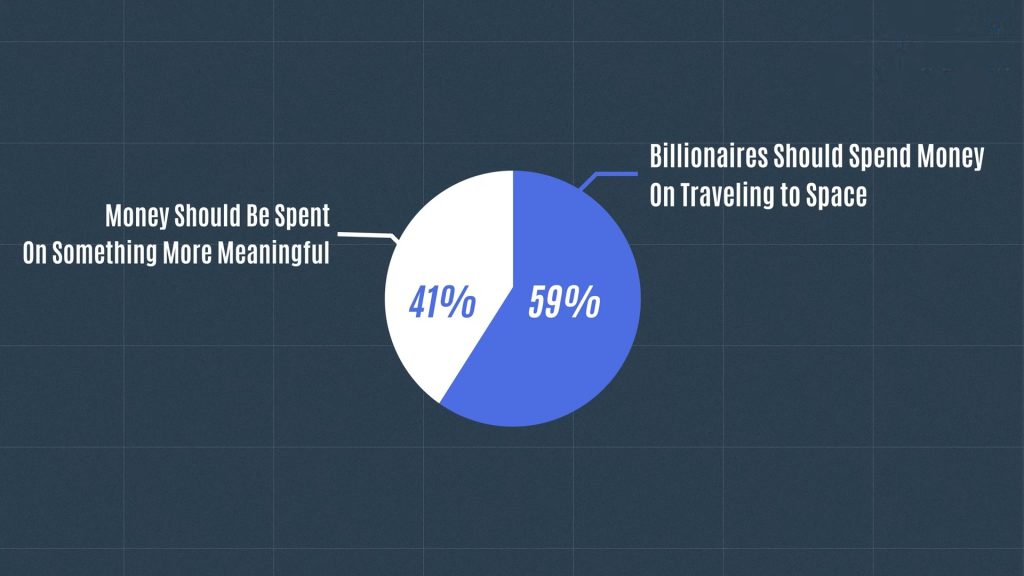
Are you Team Space or Team Earth? In case you fit in the latter, you should know that as of September 2021, 49 percent of American adults wanted to travel to space if money was not an issue. Meanwhile, the remaining 51 percent had no interest in going to space. Another question might arise – is it safe to travel to space? Well, space travel comes with its own set of safety and risk assessments. For example, with more tourists visiting space, the amount of debris, such as pieces of rockets, satellites, and any other junk, will increase exponentially. This can prove dangerous and harmful to both astronauts and spacecraft.
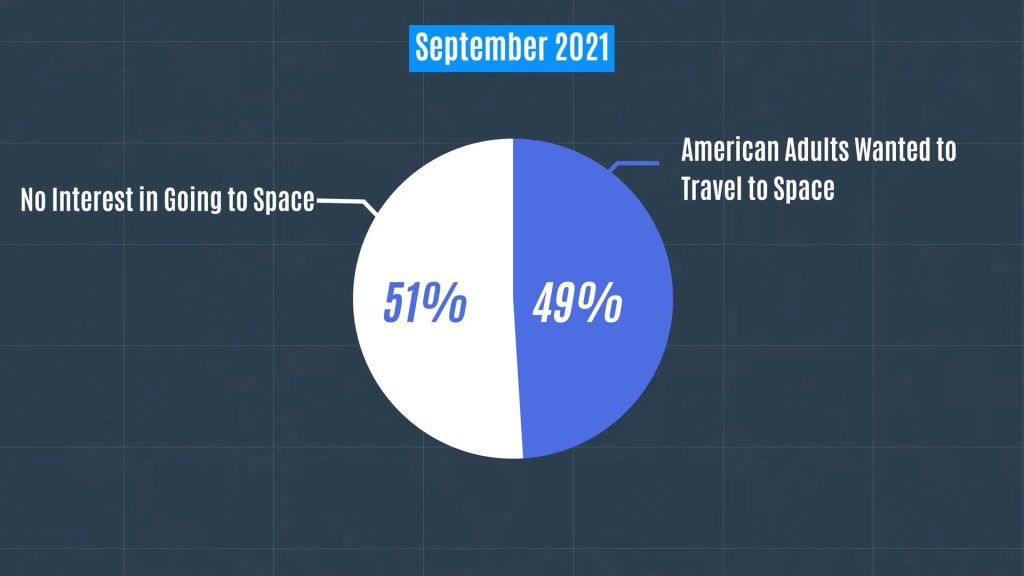
For instance, if you want a basic comparison of the space companies we’ve discussed, here it goes. Inside Climate News stated the rockets launched by billionaires Elon Musk and Richard Branson emit black carbon in the stratosphere, which is 500 times worse for the climate than it is on Earth. By contrast, Billionaire Jeff Bezos’ rockets burn liquid hydrogen and oxygen and pose a lesser climate threat.
Revenue Trends in the Global Space Tourism Market
So now, let’s get an idea of the amount of revenue space tourism draws along with the forecast.
According to Vantage Market Research, The Global Space Tourism Market size is forecast to reach USD 3622.5 Million by 2028. It is expected to exhibit a Compound Annual Growth Rate of 36.4 percent during the forecast period.
Statista stated the estimated revenue of the orbital space tourism market worldwide amounted to roughly 385 million U.S. dollars in 2021. This figure is expected to reach 555 million U.S. dollars by 2030.
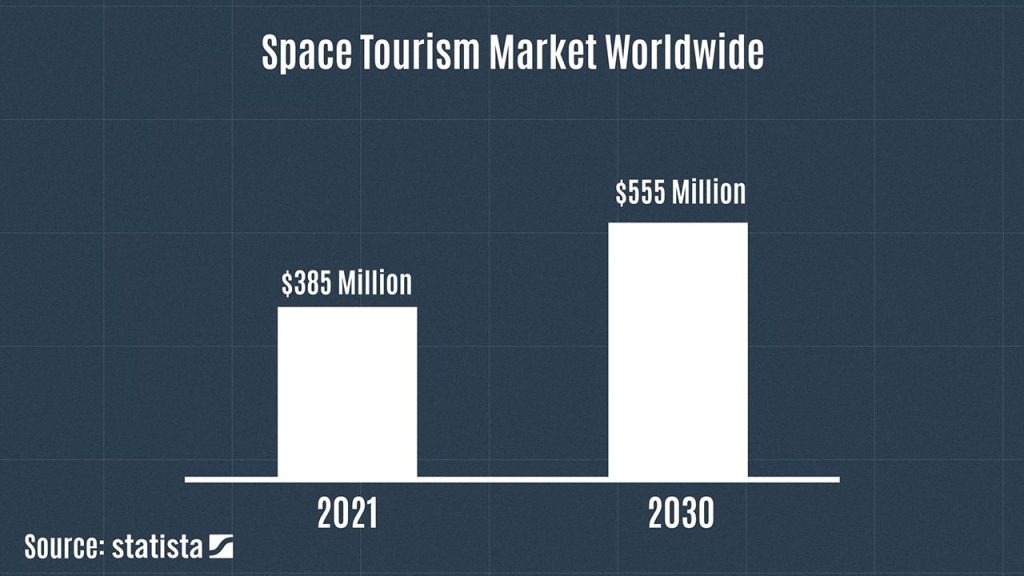
Also, Grandview Research stated the global space tourism market size was valued at USD 598 million in 2021. And it is expected to expand at a compound annual growth rate (CAGR) of 37.1 percent from 2022 to 2030. However, rising technological advancements, growth of adventure travelers, High Net Worth of Income individuals, and increased focus on research and development activities by government and private research organizations. As space tourism allows travelers to travel within and across the Earth’s orbit for recreation or business purposes, it’s anticipated to make travel accessible to non-astronaut people in the coming years. The industry growth rate is expanding tremendously due to technological innovations and users’ disposition toward space adventures.
Future of Space Tourism
As far as the future of space tourism is concerned, it’s sure to open up new opportunities for our planet. Someday, a person might be born in space and live their entire life in space without ever visiting planet Earth. That sounds unbelievable, but it can happen!
It’s noteworthy to mention that space hotels are not a fantasy anymore. Space hotels will likely be the next venture to support space tourism. A company named Orion Span has developed plans for the first-ever “affordable” luxury space hotel called “Aurora Station.” Orion Span was looking to launch in 2021 and start welcoming guests in 2022. This doesn’t mean the opportunity will be available to the general public because it’s anticipated to cost around $9.5 million for a 12-day stay at the ‘Aurora station.’
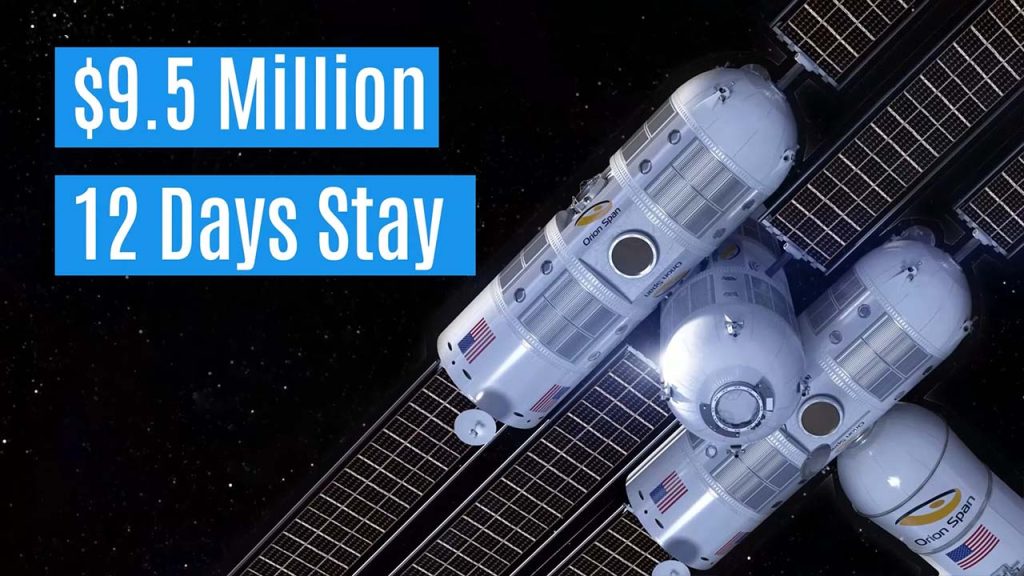
Furthermore, per the New York Times, space enthusiasts believe that travelers won’t be traveling to space just for the ride. They’ll want to stay for a while. Orbital Assembly Corporation, a manufacturing company whose goal is to colonize space, is building the world’s first space hotels — two ring-shaped properties that will orbit Earth, called Pioneer Station and Voyager Station. They’re optimistic about the project, with an opening date of 2025 for Pioneer Station, along with a capacity of 28 guests.
Wrapping Up
Overall, it’s no wonder space tourism is not child’s play, nor should it be taken lightly. While space tourism is unbelievably exciting, it’s essential to consider the potential risks too. Since Planet Earth is still viable to dwell in, space tourism is not a feasible option for normal humans.
If you consider the possible rewards and envision a safer and more environment-friendly approach, space tourism has a promising time ahead. And it’s evident space tourism will offer both advantages and disadvantages!

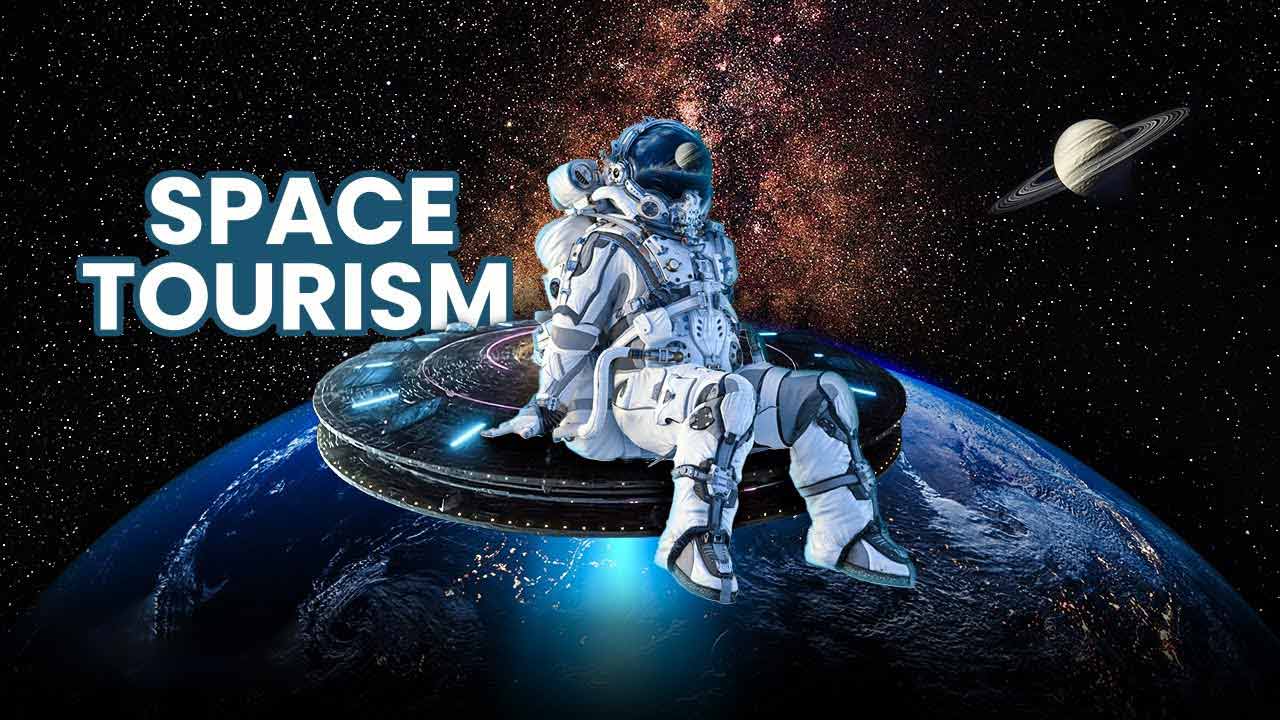








Leave a Comment